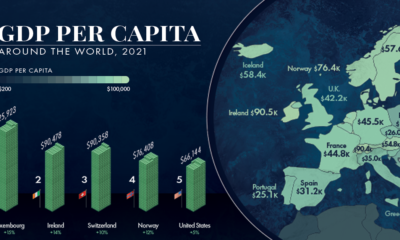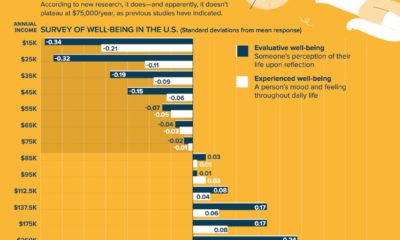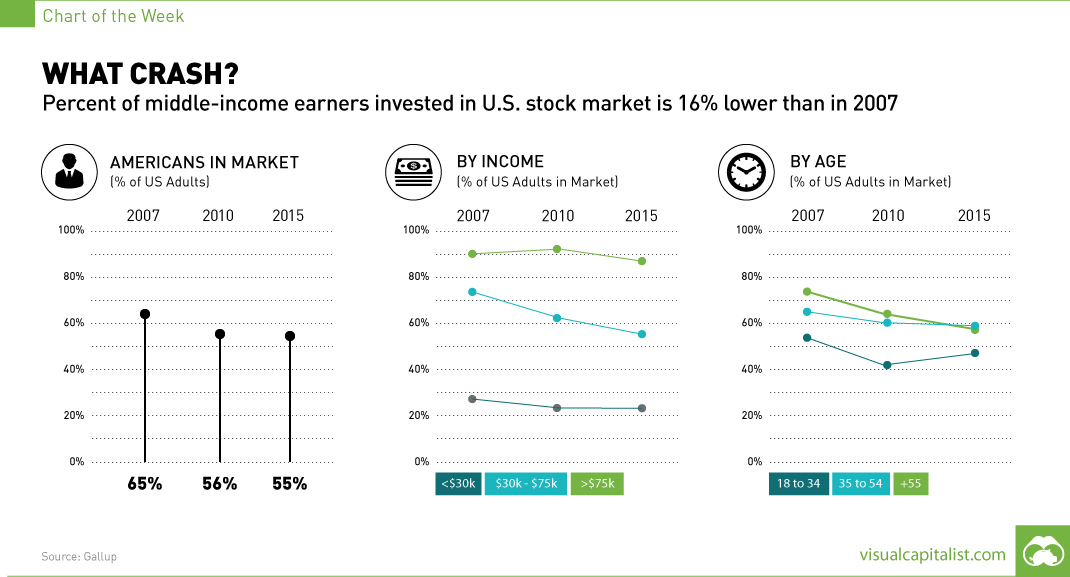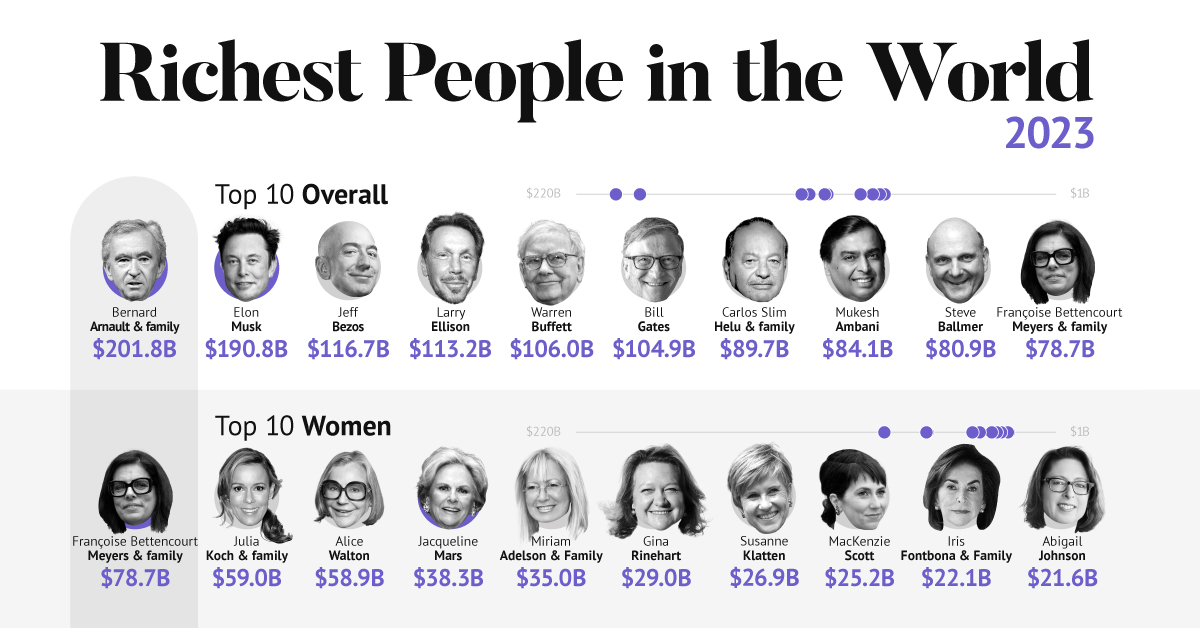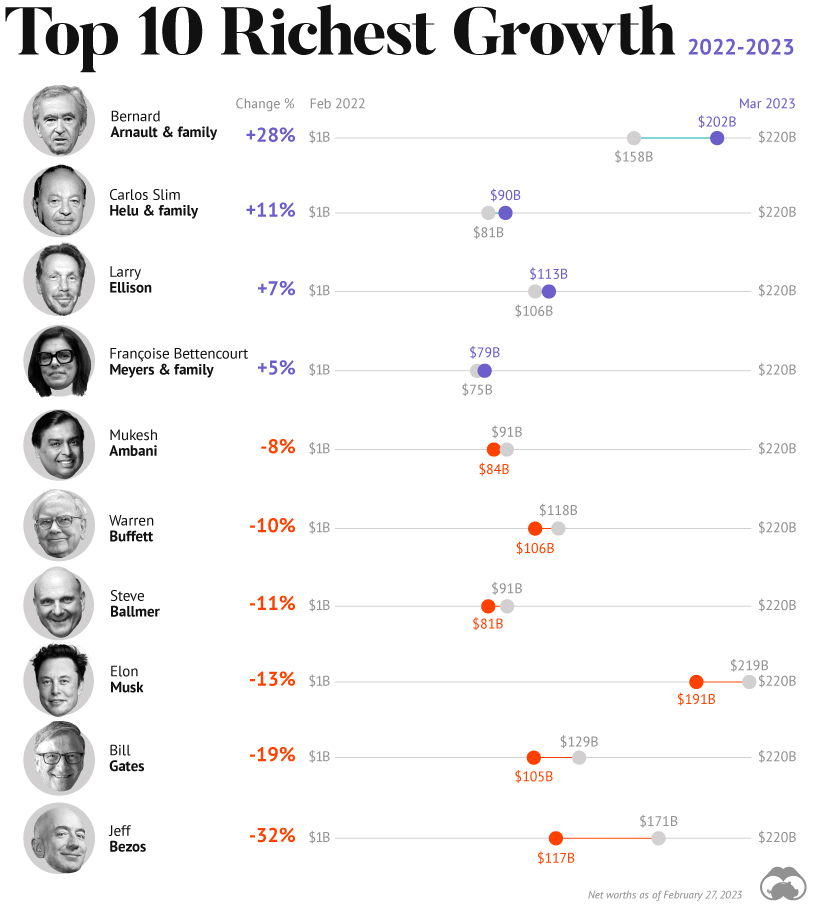Remittances serve as an economic lifeline around the world, particularly for low- and middle-income countries (LMICs). Today’s visualization relies on the latest data from the World Bank to create a snapshot of these global remittance flows. Where do most of these remittances come from, and which countries are the biggest recipients?
Remittances: An Origin Story
Remittances are a type of capital flow, with significant impacts on the places they wind up. These money transfers have surpassed official aid being sent to LMICs for decades, and in this day and age, are rivaling even Foreign Direct Investment (FDI) flows. Remittance flows mainly help improve basic living standards such as housing, healthcare, and education, with leftover funds going towards other parts of the economy. They can also be a means for increasing the social mobility of family and friends back home. Altogether, 50% of remittances are sent in either U.S. dollars, or the closely-linked currencies of Gulf Cooperation Council (GCC) countries, such as the Saudi riyal. It’s not surprising then, that the U.S. is the biggest origin country of remittances, contributing $68.5 billion in 2018—more than double that of the next-highest country, Saudi Arabia, at $33.6 billion.
Remittance Flows As A Safety Net
The impact of remittances on LMICs can vary depending on what you measure. In absolute terms, the top 10 LMIC recipients received $350 billion, or nearly 64% of total remittances in 2019. Top Remittance Recipients in 2019 (USD) India tops the chart as the largest remittances beneficiary, followed by China and Mexico. Interestingly, these three countries are also the main destinations of remittance flows from the U.S., but in the reverse order. Mexico and the U.S. have one of the most interconnected remittance corridors in the world. However, the chart above makes it clear that simply counting the dollars is only one part of the picture. Despite these multi-billion dollar numbers, remittances are equal to only a fraction of these economies. By looking at remittances as a percentage of nominal GDP, it’s clear that they can have an outsize impact on nations, even if the overall value of flows are much lower in comparison. Top Remittance Recipients in 2019 (% of GDP) It’s clear that the cash influxes provided by remittances are crucial to many smaller countries. Take the Polynesian archipelago of Tonga, for example: even though it only saw $190 million in remittances from abroad, that amount accounts for nearly 40% of the country’s nominal GDP.
Will The Remittance Tides Turn?
The World Bank projects remittance flows to increase to nearly $600 billion by 2021. But are such projections of future remittance flows reliable? The researchers offer two reasons why remittances may ebb and flow. On one hand, anti-immigration sentiment across major economies could complicate this growth, as evidenced by Brexit. The good news? That doesn’t stop immigration itself from taking place. Instead, where these migrants and their money end up, are constantly in flux. This means that as immigration steadily grows, so will remittance flows. What’s more, fintech innovations have the potential to bolster this progress, by making money transfers cheaper and easier to access. —UN ESCAP, Oct 2019 on A lagging stock market dented these fortunes against high interest rates, energy shocks, and economic uncertainty. But some of the world’s billionaires have flourished in this environment, posting sky-high revenues in spite of inflationary pressures. With data from Forbes Real-Time Billionaires List, we feature a snapshot of the richest people in the world in 2023.
Luxury Mogul Takes Top Spot
The world’s richest person is France’s Bernard Arnault, the chief executive of LVMH.
With 75 brands, the luxury conglomerate owns Louis Vuitton, Christian Dior, and Tiffany. LVMH traces back to 1985, when Arnault cut his first major deal with the company by acquiring Christian Dior, a firm that was struggling with bankruptcy.
Fast-forward to today, and the company is seeing record profits despite challenging market conditions. Louis Vuitton, for instance, has doubled its sales in four years.
In the table below, we show the world’s 10 richest people with data as of February 27, 2023:
Elon Musk, the second-wealthiest person in the world has a net worth of $191 billion. In October, Musk took over Twitter in a $44 billion dollar deal, which has drawn criticism from investors. Many say it’s a distraction from Musk’s work with Tesla.
While Tesla shares have rebounded—after falling roughly 70% in 2022—Musk’s wealth still sits about 13% lower than in March of last year.
Third on the list is Jeff Bezos, followed by Larry Ellison. The latter of the two, who founded Oracle, owns 98% of the Hawaiian island of Lanai which he bought in 2012 for $300 million.
Fifth on the list is Warren Buffett. In his annual letter to shareholders, he discussed how Berkshire Hathaway reported record operating profits despite economic headwinds. The company outperformed the S&P 500 Index by about 22% in 2022.
How Fortunes Have Changed
Given multiple economic crosscurrents, billionaire wealth has diverged over the last year. Since March 2022, just four of the top 10 richest in the world have seen their wealth increase. Two of these are European magnates, while Carlos Slim Helu runs the largest telecom firm in Latin America. In fact, a decade ago Slim was the richest person on the planet. Overall, as the tech sector saw dismal returns over the year, the top 10 tech billionaires lost almost $500 billion in combined wealth.
Recent Shakeups in Asia
Perhaps the most striking news for the world’s richest centers around Gautam Adani, formerly the richest person in Asia. In January, Hindenburg Research, a short-selling firm, released a report claiming that the Adani Group engaged in stock manipulation and fraud. Specifically, the alleged the firm used offshore accounts to launder money, artificially boost share prices, and hide losses. The Adani Group, which owns India’s largest ports—along with ports in Australia, Sri Lanka, and Israel—lost $100 billion in value in the span of a few weeks. Interestingly, very few Indian mutual funds hold significant shares in Adani Group, signaling a lack of confidence across India’s market, which was also cited in Hindenburg’s report. As a result, Mukesh Ambani has climbed to Asia’s top spot, controlling a $84 billion empire that spans from oil and gas and renewable energy to telecom. His conglomerate, Reliance Industries is the largest company by market cap in India.
